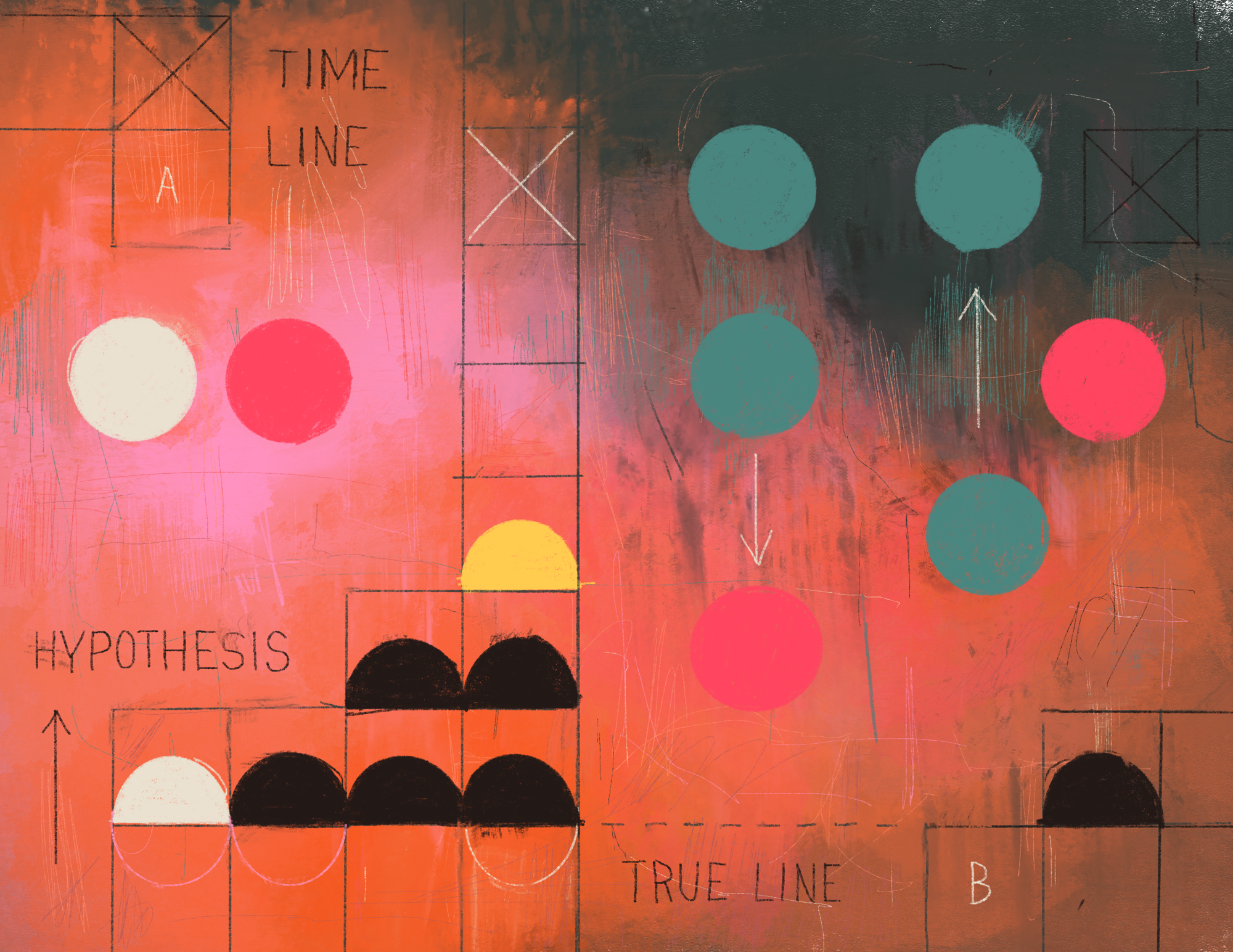A blank drawing surface stares back as a challenge. The smooth surface of a page says nothing about what it wants. A fresh sketchbook or canvas can stop many artists in their tracks.
Often the way I will approach a blank page is to immediately make “random” marks and forms — scribble, smudge, glue, scrape, smear — to break up the space of the page.
Because my approach to art making is intuitive, I rely on an interaction between the surface, the tools, and my hand to further the process. I react to the surface and then to my own mark making — action and then reaction repeating until something clicks.
Another strategy I employ is to begin with a surface that already has reactive elements to it. This has been a variety of things over the years…
- Framed birch panels come with grain and whorls that I don’t gesso preferring to work with that dynamic ground
- Using printed book pages can work though I often find a page filled with text too dense a starting point
- Lined or gridded paper is a favourite
My long-term project “The Ledger” is a perfect example of the last mode. It’s a large antique insurance ledger with tight rows and columns plotted on its pages. Here’s an example image from that project.

You can see that some of the elements of the drawing are informed by the underlying lines of the page and some even align to them directly. I break from the grid as I feel fit but I enjoy reacting to it much of the time. It could be the designer in me. Though I’ve never been much of a strict grid adherent in my print or digital design work — I prefer organic flows between type and imagery where possible.

My creative reaction to the lines and grids of pages have also lead me to draw further structural elements on top of them like coarse lattices of grids and repeated and aligned circular forms.
So when I recently started making the series of digital drawings I showed some of in my last post, one of the things that was immediately different was that blankest of blank digital “page”. That cold backlit white rectangle gives up nothing.

I have used the scribble and smudge technique to quickly remove the characterless nature of that white blank and that does give me something to engage with. But I found myself missing those pre-existing horizontal and vertical lines.
I want these oddly technical but reliably un-precious surfaces…



And yes, I can bring scans or photos of these pages into Procreate but something has held me back from that. While all sorts of elements of digital drawing are about sampling or synthesizing physical techniques, tools, and textures, I’m trying to make these drawings in a primarily digital fashion. My reference points are my own drawings on paper but I want to sample myself metaphorically and not literally I guess. We make up funny rules for ourselves while making art don’t we?
I’m very much still learning to use Procreate but an early “discovery” was the mode that overlays a temporary grid on the current page. This was a minor revelation in my attempt to translate my work from page to screen.


With the ghost grid in place, I can react to it or ignore it as I see fit. It isn’t the same as a grid that remains and becomes a part of the final drawing but it can play that role temporarily.
Much of my drawing is a play between grounding and releasing the view. I work on creating motion and relation between marks, shapes, symbols, and words. Many of them are dense with a chaos of marks but I like to balance that with the aspects of the page itself.

